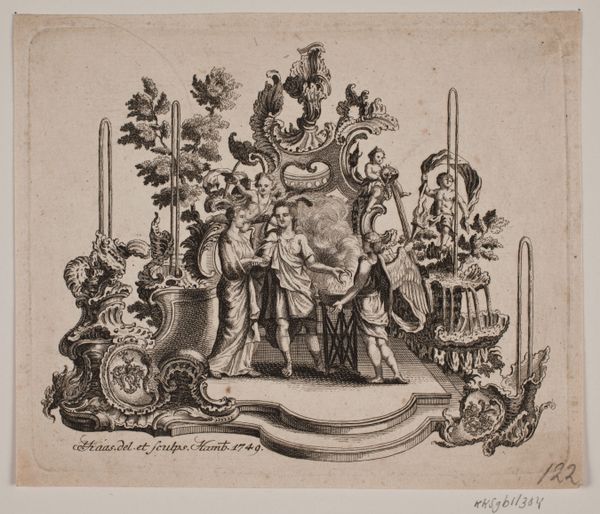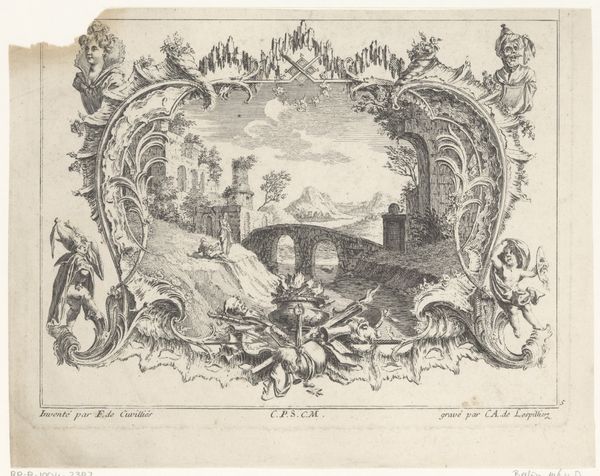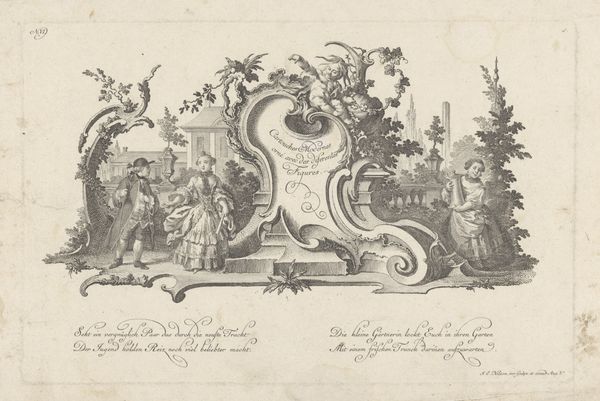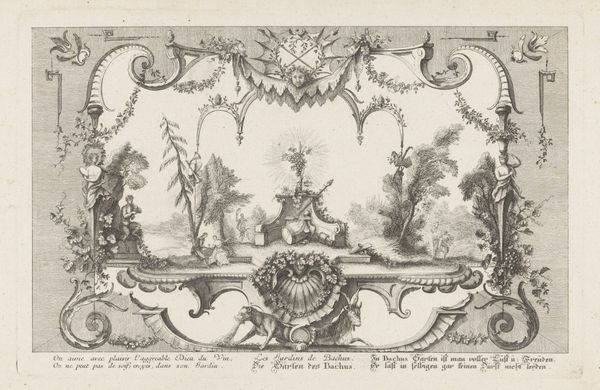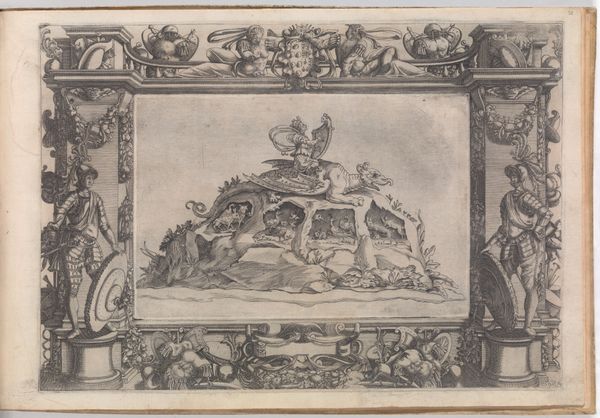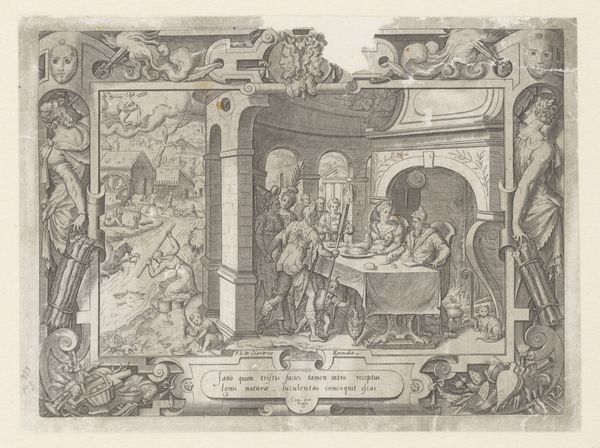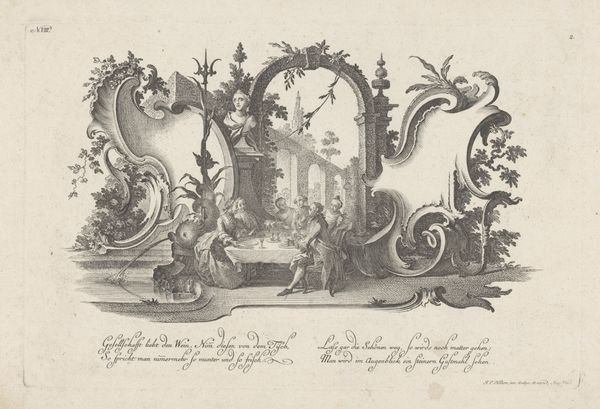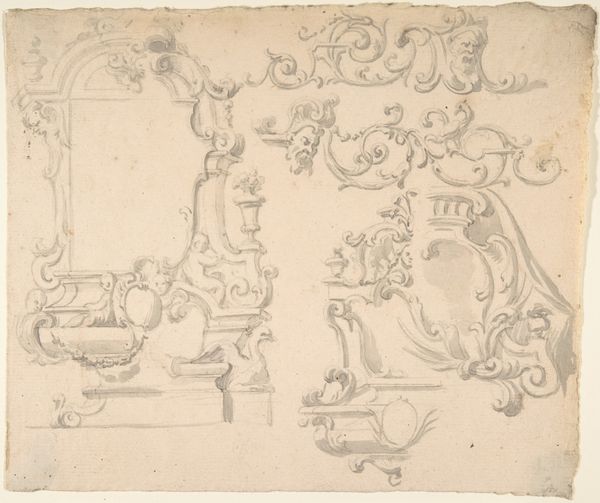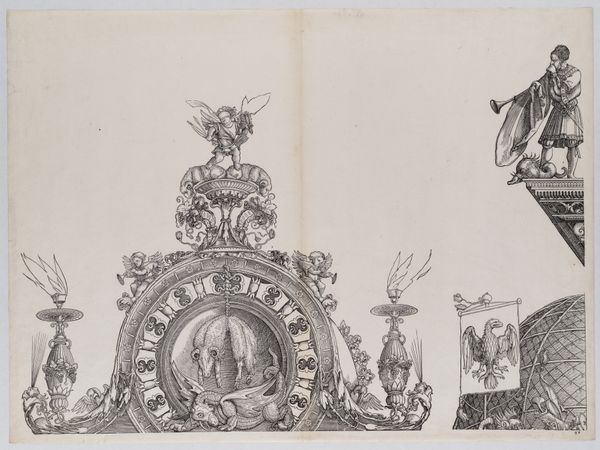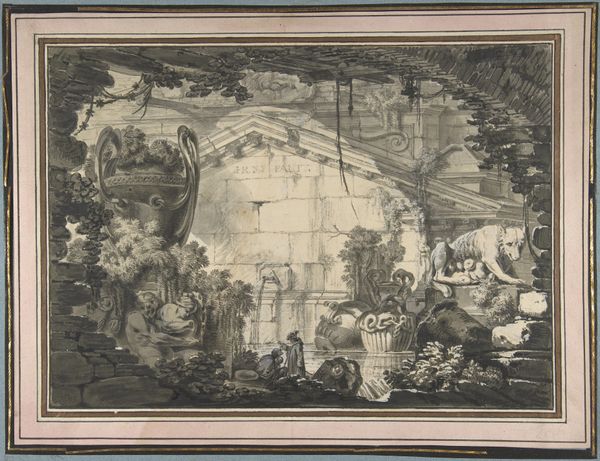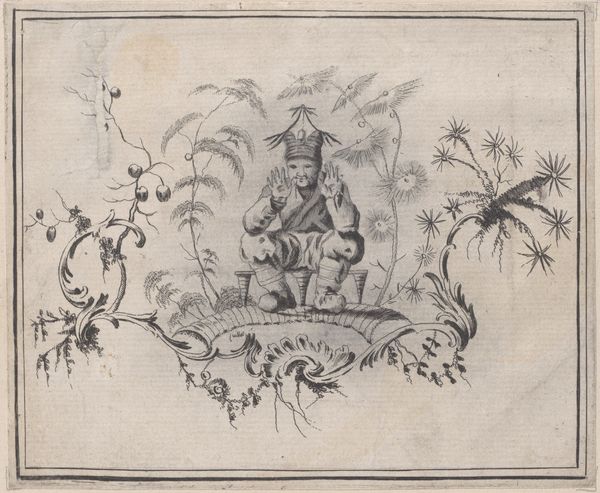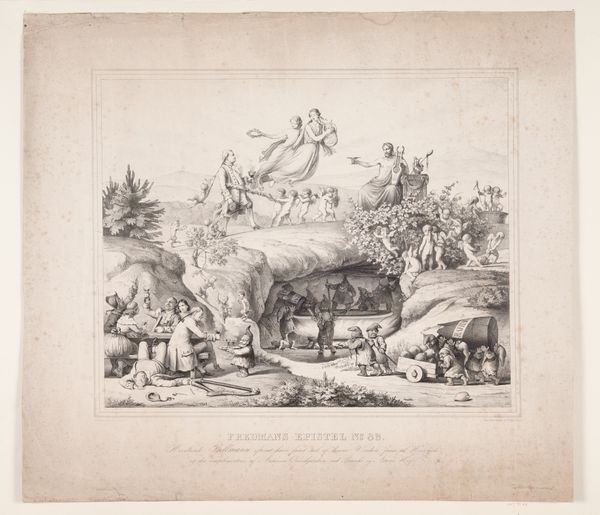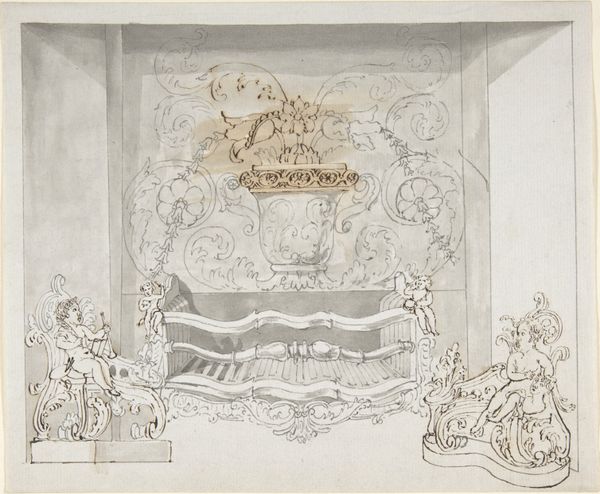
Dimensions: height 478 mm, width 606 mm
Copyright: Rijks Museum: Open Domain
Editor: This is "Spotprent in Leidse studentenalmanak, 1854" by Johannes Christiaan d' Arnaud Gerkens. It looks like an ink and pen drawing, printed in a Leiden student almanac. It’s incredibly detailed and busy – a real snapshot of student life, perhaps? What exactly is going on here? Curator: Precisely! It's a window into 19th-century student culture, offering a critical, even satirical, perspective. Consider the almanac itself: a public document shaping student identity through curated content. This image, functioning as social commentary, participates in defining the roles and expectations within the student body. How do you interpret the central figure, surrounded by these vignettes? Editor: He seems to be daydreaming, sitting in a very book-lined study, with all these other scenes sort of floating around him. Is it meant to depict the aspirations and realities of student life? Curator: That's a perceptive reading. It presents the duality of student existence: the idealized world of academia juxtaposed with the often-chaotic realities of daily life and social pressures. What aspects of the surrounding imagery strike you as particularly telling in terms of social or political undertones? Notice the style's romanticism - what expectations might that embed within the content? Editor: I see scenes of revelry, perhaps some political activity… it feels like a world of privilege, yet also one of responsibility, almost like there is pressure on him. The romanticism idealizes this, masking tensions and responsibilities. Curator: Exactly! Gerkens’ piece isn’t just a depiction of student life, it’s actively shaping and negotiating its meaning. It demonstrates how public art shapes identity and social norms. It's important to consider what isn’t shown, too. What voices might be missing from this narrative? Editor: It is such a critical lens on the period. I hadn't considered the power dynamics in how art, even seemingly lighthearted drawings, could enforce a very particular social and political structure. Curator: Absolutely. Thinking about art’s function within its social context opens new doors. I find that so rewarding about historical analyses.
Comments
No comments
Be the first to comment and join the conversation on the ultimate creative platform.
